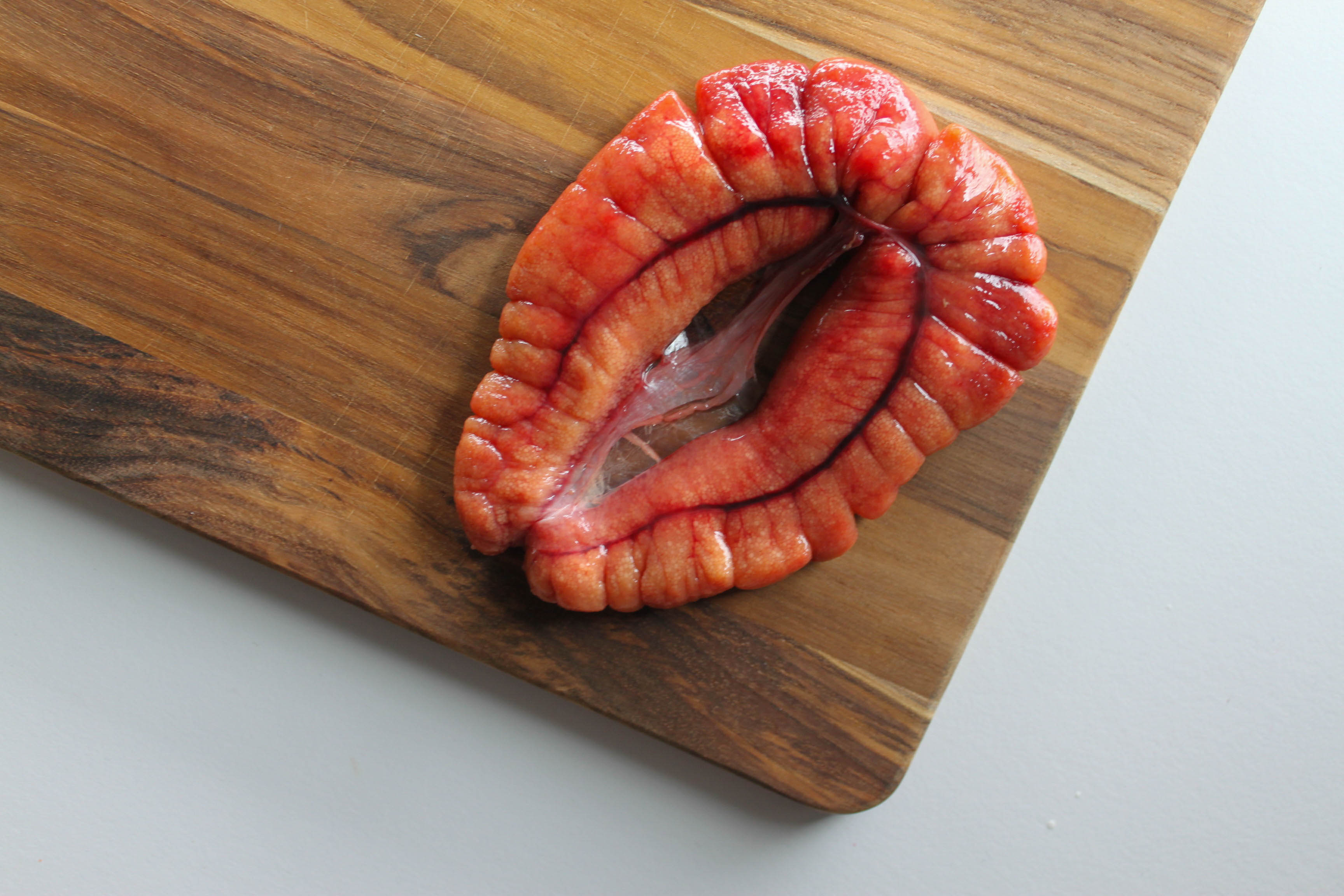
The arrival of shad roe is our reminder that tulips and longer days are right around the corner. It is a delicacy that is found on the east coast just as soon as the weather starts to turn for the better. The season can be anywhere from February to May, depending upon the location along the coastline.
Shad is an American saltwater fish, a member of the herring family. It spawns in coastal streams at the beginning of spring. A typical full-grown shad weighs in around 3 to 5 pounds. Its flesh is oily, and it contains a lot of bones. For this reason, Native Americans often refer to shad as inside-out porcupines. Not an appetizing description! So why is it considered such a delicacy? The answer is simple, the roe.
Shad roe is the egg sac of the female shad fish. Each female produces a lobe-shaped pair of egg sacs. The egg sacs are bright red in color, and more closely resemble liver, or a pair of lungs, than fish. Once the roe is cooked, the color turns to a grayish-brown.
Although shad roe is fish eggs, the taste does not at all replicate caviar. It is a very delicate flavor. We often say that shad roe is something of a sponge, taking on the flavors with which it’s cooked. Often times, it is poached with butter, or cooked with bacon to envelope the roe in a smoky, rich flavor. Tomorrow, we will be showing you our take on how to cook shad roe, which we hope helps convince you to purchase the delicacy and make a delicious dish out of it, before the season is behind us. Shad roe season is a great opportunity to try something new. You’ll love it!

Where in Erie County Ohio can I find fish markets or other stores selling shad roe in the spring? I am new to this part of the country.
Thank You
Hello Jo, we are unsure of fish markets in that area. But we do ship seafood anywhere in the continental US and will have shad roe when the season comes! We can of course ship you some. Our advice would be to follow us on Facebook (@harborfishmarket) so that you know when shad arrives in our store, then you can give our shipping department a call (207-775-0251×2) and setup an order to be delivered to your door overnight!
Let me know when you have shad row?
Shad roe is not available until the Spring.
How much will it be per pair?
We will not know until it arrives. All seafood is market price.
In 2005 I bought a two dozen cans of Shad Roe online… it was marvelous. The cans were oblong, I’ve forotten the name of the company.
I would love to find it again.
Is Shad Roe available in cans, I used to buy it haven’t seen it in a long time ?
We only carry fresh shad roe when it is in season. Shad roe is harvested from February to May. Follow us on Facebook, we always update our new and exciting arrivals.
When is it in season?
Shad roe generally arrives in the Spring so you’ll have to wait a bit!
It was Nelson Crab Co on the west coast…. it was marvelous.
I live in DE. I went to our local Weis store and the fish dept ordered me 5 roe sets and I picked them up today. I put the roe in egg and then dredge it in flour, salt and pepper it and fry it in butter. I always cover the pan as sometimes the membrane has a little tear in it and some of the e ggs escape and pop all over! I lived near the Hudson river in the Catskills in NY and every Spring they had a Shad Roe festival. It is delicious!!
Thanks for sharing!